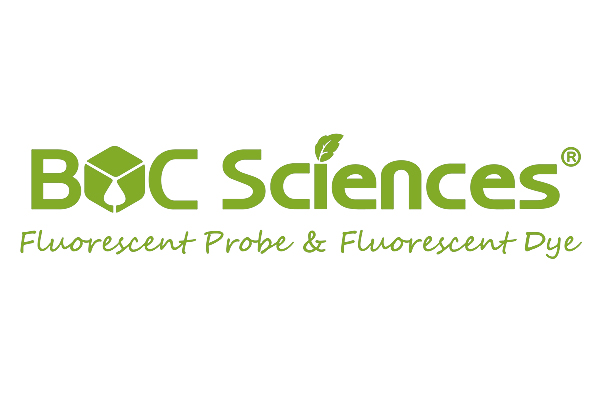
Coelenterazine hcp | CAS 123437-32-1
| Catalog Number | A14-0062 |
| Category | Calcium, Chloride and Other indicators |
| Molecular Formula | C25H25N3O2 |
| Molecular Weight | 399.48 |
* Please be kindly noted products are not for therapeutic use. We do not sell to patients.
Product Introduction
Modified coelenterazine analog offering improved stability and quantum yield. Designed for advanced bioluminescent reporter assays and imaging.
Chemical Information
Product Specification
Application
Computed Properties
Patents
| Synonyms | CLZN hcp; 2-Benzyl-8-(cyclopentylmethyl)-6-(4-hydroxyphenyl)-7H-imidazo[1,2-a]pyrazin-3-one |
| IUPAC Name | 2-benzyl-8-(cyclopentylmethyl)-6-(4-hydroxyphenyl)imidazo[1,2-a]pyrazin-3-ol |
| Canonical SMILES | C1CCC(C1)CC2=NC(=CN3C2=NC(=C3O)CC4=CC=CC=C4)C5=CC=C(C=C5)O |
| InChI | InChI=1S/C25H25N3O2/c29-20-12-10-19(11-13-20)23-16-28-24(21(26-23)14-17-8-4-5-9-17)27-22(25(28)30)15-18-6-2-1-3-7-18/h1-3,6-7,10-13,16-17,29-30H,4-5,8-9,14-15H2 |
| InChIKey | UCSBOFLEOACXIR-UHFFFAOYSA-N |
| Signal | Warning |
| GHSHazardStatements | H315 (100%): Causes skin irritation [Warning Skin corrosion/irritation] H319 (100%): Causes serious eye irritation [Warning Serious eye damage/eye irritation] H335 (100%): May cause respiratory irritation [Warning Specific target organ toxicity, single exposure; Respiratory tract irritation] |
| Precautionary Statement Codes | P261, P264, P264+P265, P271, P280, P302+P352, P304+P340, P305+P351+P338, P319, P321, P332+P317, P337+P317, P362+P364, P403+P233, P405, and P501 (The corresponding statement to each P-code can be found at the GHS Classification page.) |
Coelenterazine hcp is widely used as a calcium indicator in various biological and biochemical research fields. It acts as a substrate for photoproteins like aequorin and obelin, which emit light upon binding to calcium ions. This property makes it useful in studying calcium signaling pathways, which are critical in numerous physiological processes such as muscle contractions, neuronal activity, and secretion events. The ability to monitor calcium levels in real-time using luminescence allows researchers to gain insight into the spatial and temporal dynamics of calcium signaling. This application is particularly beneficial in neurobiology, where understanding calcium fluxes is crucial for elucidating mechanisms underlying synaptic transmission and plasticity.
Another significant application of Coelenterazine hcp is in the detection of reactive oxygen species (ROS) and other oxidative molecules. Coelenterazine hcp can undergo oxidative modification in the presence of superoxide anions and other ROS, resulting in chemiluminescence. This property is exploited to study oxidative stress and its contribution to various diseases, including cancer, cardiovascular diseases, and neurodegenerative disorders. By using Coelenterazine hcp, researchers can quantify the levels of ROS within cells or tissues, thereby assessing the oxidative state and how it is affected by different treatments or conditions. This application is critical in understanding the role of oxidative stress in pathophysiology and evaluating the efficacy of antioxidant therapies.
In addition, Coelenterazine hcp is utilized in imaging and tracking biological processes within live cells and organisms. Its ability to induce bioluminescence upon reaction with photoproteins allows for non-invasive imaging techniques. For instance, genetically modified organisms expressing photoproteins can be used in conjunction with Coelenterazine hcp to visualize cellular events in vivo. This is particularly advantageous in cancer research, where tumor growth and metastasis can be monitored over time in animal models. The bioluminescent signal provides real-time feedback on the biological processes occurring within the organism, enabling researchers to observe the progression of diseases and the impact of therapeutic interventions without the need for invasive procedures.
Furthermore, Coelenterazine hcp finds application in marine biology and environmental sciences. Many marine organisms naturally produce bioluminescence through the use of Coelenterazine. Studying these organisms and their luminescent properties helps researchers learn about marine biodiversity and the ecological roles of bioluminescent species. For example, bioluminescence is often used by marine organisms for predation, defense, and communication. By investigating the mechanisms underlying natural bioluminescence, scientists can develop new applications and technologies, such as novel imaging methods or bio-inspired materials. Additionally, understanding bioluminescence in marine environments can provide indicators of environmental changes, contributing to conservation and management efforts.
| XLogP3 | 6.4 |
| Hydrogen Bond Donor Count | 2 |
| Hydrogen Bond Acceptor Count | 4 |
| Rotatable Bond Count | 5 |
| Exact Mass | 399.19467705 g/mol |
| Monoisotopic Mass | 399.19467705 g/mol |
| Topological Polar Surface Area | 70.6Ų |
| Heavy Atom Count | 30 |
| Formal Charge | 0 |
| Complexity | 541 |
| Isotope Atom Count | 0 |
| Defined Atom Stereocenter Count | 0 |
| Undefined Atom Stereocenter Count | 0 |
| Defined Bond Stereocenter Count | 0 |
| Undefined Bond Stereocenter Count | 0 |
| Covalently-Bonded Unit Count | 1 |
| Compound Is Canonicalized | Yes |
| Publication Number | Title | Priority Date |
|---|---|---|
| WO-2022250108-A1 | Phenyl urea derivative | 2021-05-26 |
| US-2022373540-A1 | Reagent kit containing polypeptide for use in detection of intermolecular interactions | 2021-05-19 |
| US-2022396830-A1 | Bioluminescent detection of dna synthesis | 2021-05-13 |
| WO-2022241249-A1 | Bioluminescent detection of dna synthesis | 2021-05-13 |
| WO-2022232195-A2 | Covalent aptamers | 2021-04-26 |
Recommended Services
Recommended Articles

- Hoechst Dyes: Definition, Structure, Mechanism and Applications
- Mastering the Spectrum: A Comprehensive Guide to Cy3 and Cy5 Dyes
- Fluorescent Probes: Definition, Structure, Types and Application
- Fluorescent Dyes: Definition, Mechanism, Types and Application
- Coumarin Dyes: Definition, Structure, Benefits, Synthesis and Uses
- Unlocking the Power of Fluorescence Imaging: A Comprehensive Guide
- Cell Imaging: Definitions, Systems, Protocols, Dyes, and Applications
- Lipid Staining: Definition, Principles, Methods, Dyes, and Uses
- Flow Cytometry: Definition, Principles, Protocols, Dyes, and Uses
- Nucleic Acid Staining: Definition, Principles, Dyes, Procedures, and Uses
Recommended Products
Online Inquiry



![1-(3',6'-bis(ethylamino)-2',7'-dimethyl-3-oxospiro[isoindoline-1,9'-xanthene]-2-yl)-3-phenylurea](https://resource.bocsci.com/structure/957493-98-0.gif)




![2-amino-3',6'-dihydroxyspiro[isoindoline-1,9'-xanthen]-3-one](https://resource.bocsci.com/structure/98907-26-7.gif)




